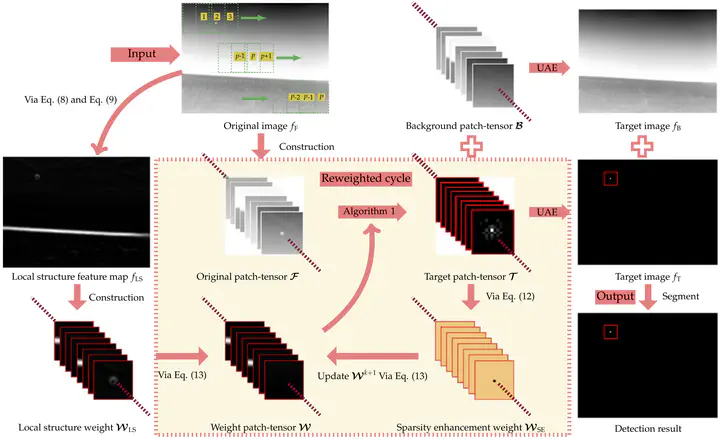Reweighted Infrared Patch-Tensor Model With Both Nonlocal and Local Priors for Single-Frame Small Target Detection

Abstract
Many state of the art methods have been proposed for infrared small target detection.They work well on the images with homogeneous backgrounds and high-contrast targets.However, when facing highly heterogeneous backgrounds, they would not perform very well, mainly due to 1) the existence of strong edges and other interfering components, 2) not utilizing the priors fully. Inspired by this, we propose a novel method to exploit both local and non-local priors simultaneously. Firstly, we employ a new infrared patch-tensor (IPT) model to represent the image and preserve its spatial correlations. Exploiting the target sparse prior and background non-local self-correlation prior, the target-background separation is modeled as a robust low-rank tensor recovery problem. Moreover, with the help of the structure tensor and reweighted idea, we design an entry-wise localstructure-adaptive and sparsity enhancing weight to replace the globally constant weighting parameter. The decomposition could be achieved via the element-wise reweighted higher-order robust principal component analysis with an additional convergence condition according to the practical situation of target detection. Extensive experiments demonstrate that our model outperforms the other state-of-the-arts, in particular for the images with very dim targets and heavy clutters.